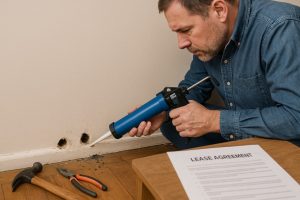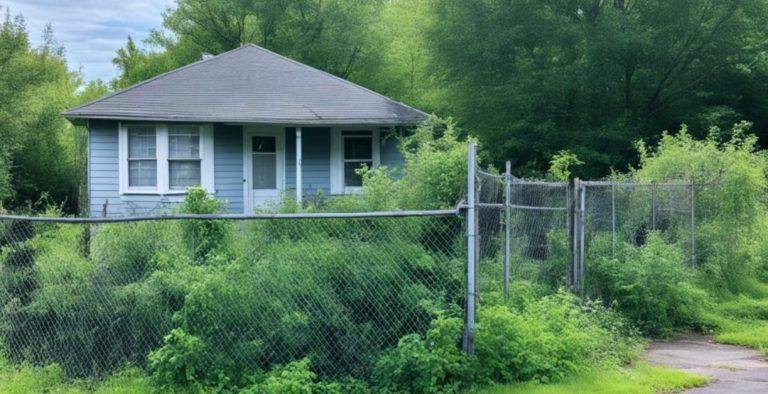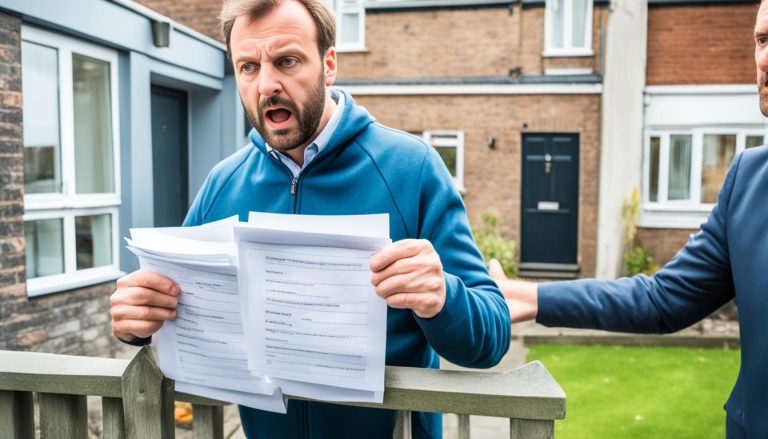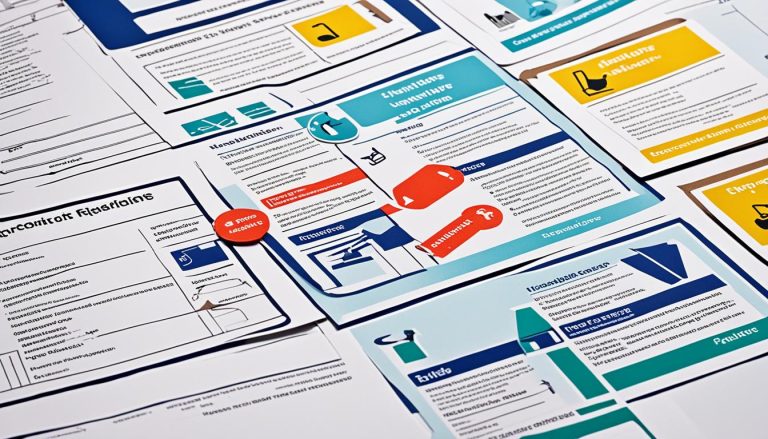In the UK rental market, the presence of mice in a property raises pressing legal and practical questions. Tenants and landlords often struggle to determine who holds the responsibility for dealing with pest infestations, especially when it comes to rodents like mice.
Understanding the dividing line between landlord duties and tenant obligations is essential, not only for ensuring compliance with housing laws but also for maintaining a healthy living environment.
This blog explores the legal frameworks, tenancy agreement clauses, and practical considerations that define responsibility for mice infestations in UK rental properties.
What Are the Legal Responsibilities of Landlords for Mice Infestations in the UK?

Landlords in the UK are bound by specific legislation to ensure that the properties they let are safe, hygienic, and suitable for habitation. Mice infestations fall under statutory concerns due to the health and safety risks they pose.
The following laws directly influence a landlord’s obligation:
- Housing Act 2004 – HHSRS: Under this system, local authorities assess potential hazards, including pest infestations, that could affect a tenant’s wellbeing. If mice are present due to poor building maintenance or structural faults, it qualifies as a Category 1 or 2 hazard.
- The Homes (Fitness for Human Habitation) Act 2018: This mandates that rental properties must remain free of serious disrepair or unsafe conditions, including vermin. If mice are present when the tenancy begins, the landlord is responsible for arranging professional extermination and making repairs.
- Environmental Protection Act 1990: Local councils can treat a persistent rodent problem as a statutory nuisance, forcing landlords to act or face enforcement.
When mice are present due to gaps in brickwork, faulty piping, broken air bricks, or poor external maintenance, the landlord must cover both the repair and pest control treatment.
When Is the Tenant Responsible for a Mice Problem?
A tenant’s responsibilities primarily relate to how they manage the property on a day-to-day basis. If their behaviour creates conditions that attract mice, they could be liable for resolving the issue.
Key scenarios where tenants may be held responsible include:
- Leaving leftover food or waste exposed
- Failing to dispose of rubbish promptly or hygienically
- Cluttering the home with boxes or items that provide nesting places
- Bringing in second-hand furniture that may carry pests
Tenants are expected to keep the property clean and sanitary, especially in kitchens and communal areas. A failure to maintain hygiene standards could result in the tenant being asked to pay for pest control treatment or correct the issue themselves.
While tenants may not be liable for initial infestations, they can be held responsible if they ignore early signs of mice or refuse to report them in a timely manner, allowing the problem to worsen.
How Do Tenancy Agreements Affect Pest Control Responsibilities?
Tenancy agreements often contain specific clauses about pest infestations. These clauses help resolve ambiguity and are legally binding, provided they are reasonable and do not contradict housing legislation.
Clauses to look for in tenancy agreements include:
- Responsibility for pest control: Some contracts state clearly whether the landlord or tenant will handle infestations during the tenancy.
- Pre-existing conditions: Agreements may state whether the property was inspected and treated for pests before the tenancy began.
- Hygiene obligations: Contracts can include stipulations that tenants maintain cleanliness and report issues swiftly.
The terms of the agreement can sometimes override standard assumptions. For example, if an agreement states that the tenant is responsible for all pest issues, but mice are found to be entering through structural damage, the landlord still holds responsibility under statutory housing obligations.
What Role Does Environmental Health Play in Resolving Pest Issues?
Environmental Health departments within local councils exist to protect public health and ensure rented properties meet legal standards. They can intervene when infestations are reported and landlords or tenants fail to resolve them.
Environmental Health has the authority to:
- Conduct property inspections under the HHSRS
- Serve legal notices to landlords for failure to fix infestations caused by property defects
- Order emergency remedial work or take legal action
In some cases, the council may even carry out pest control themselves and recover the cost from the landlord. This typically applies when a landlord refuses to address an issue that poses a health risk to the tenant.
Tenants should only escalate to Environmental Health after giving the landlord reasonable time to respond to a written pest complaint.
How Should Landlords and Tenants Communicate About Mice Infestations?
Clear and timely communication can prevent small issues from becoming legal disputes. Both landlords and tenants have responsibilities to report, document, and address mice infestations efficiently.
Best communication practices include:
- Tenants reporting any rodent activity immediately in writing, with photographs or videos for evidence
- Landlords acknowledging complaints and arranging inspections or treatment within a reasonable period
- Both parties documenting all communications for reference
This collaborative approach reduces miscommunication and helps identify who may be responsible for the infestation.
What Preventive Steps Can Be Taken to Avoid Mice Infestations?
Preventing a mice infestation is a shared responsibility between landlords and tenants. By taking proactive measures, both parties can help maintain a pest-free environment while avoiding the cost and disruption of dealing with an active infestation. Prevention is not only more economical but also contributes to tenant wellbeing and legal compliance under UK housing laws.
Why Prevention Matters?
Mice can pose serious health risks and cause significant property damage. Once an infestation sets in, eradication can be time-consuming and expensive. Preventive efforts help protect the condition of the property and ensure that it remains habitable as defined by the Homes (Fitness for Human Habitation) Act 2018.
From a legal perspective, landlords must ensure that the structure does not permit pests to enter, while tenants must maintain cleanliness and notify landlords of any signs of infestation. Proactive management reduces the likelihood of disputes and ensures quicker resolution if pests do appear.
Landlord Responsibilities in Preventing Mice Infestations

Landlords have a legal obligation to maintain the property in a way that prevents rodent access. This includes preserving the structural integrity of the building and maintaining outdoor areas in a manner that does not attract pests.
Sealing Structural Entry Points
One of the most critical preventative measures landlords can take is sealing any potential access points where mice might enter. Small gaps in external walls, holes around pipework, or damaged brickwork can easily become entryways for rodents. These should be professionally sealed before a new tenancy begins and checked periodically during long tenancies.
Older buildings may be more vulnerable, especially around floorboards, attic spaces, and vents. Where possible, durable materials such as mesh or sealant should be used to block off access while maintaining ventilation where necessary.
Conducting Routine Property Inspections
Regular inspections allow landlords to identify maintenance issues early. During inspections, particular attention should be given to signs of pest activity such as droppings, nesting materials, or gnaw marks.
Inspections should ideally take place:
- At the start and end of a tenancy
- After periods of vacancy
- Seasonally, particularly during colder months when mice are more likely to seek shelter indoors
These inspections not only protect the property but also serve as a proactive demonstration of the landlord’s compliance with housing standards.
Managing Outdoor Waste and Attractants
External bins and food waste storage areas are common sources of attraction for rodents. Landlords are responsible for providing appropriate waste disposal solutions and ensuring communal bin areas are well maintained. Overflowing or damaged bins near entry points can make infestations more likely, especially in flats or multi-tenant properties.
Key landlord prevention step:
Ensure all potential entry points are sealed and that waste storage is properly maintained.
Tenant Responsibilities in Preventing Mice Infestations
While landlords manage the condition of the building, tenants are responsible for cleanliness and hygiene within the property during their tenancy. Mice are opportunistic and are often drawn indoors by poor food storage and unsanitary conditions.
Maintaining Cleanliness and Hygiene
Day-to-day habits play a critical role in pest prevention. Tenants are expected to keep living spaces clean, especially kitchens, food storage areas, and waste disposal points. Mice are particularly attracted to leftover food, crumbs, and bins left unsealed overnight.
Good hygiene practices include:
- Cleaning up after cooking
- Keeping kitchen counters free of food residue
- Emptying indoor bins regularly
These simple actions help to minimise the chances of attracting rodents into the home.
Proper Food and Waste Storage
One of the most effective ways to prevent mice is to store food securely. Dry foods should be kept in sealed containers, and any perishables stored properly in cupboards or the refrigerator. Pet food should also be removed when not in use, particularly overnight.
Bins, especially those kept indoors, should be emptied often and always kept sealed. Neglecting these basic hygiene tasks can make the tenant liable for resulting infestations under most tenancy agreements.
Key tenant prevention step:
Store food in sealed containers and dispose of waste regularly.
Reporting Early Signs of Infestation
Timely communication with the landlord is essential when signs of mice first appear. Tenants are advised to report any signs such as droppings, scratching sounds, or evidence of gnawing as soon as they are noticed.
Failure to report early signs could allow the infestation to worsen and potentially shift the cost of resolution onto the tenant, particularly if the delay is seen as negligence.
If there is any uncertainty about whether the cause is structural or due to hygiene, early reporting ensures that both parties can inspect the situation before it escalates.
Who Pays for Pest Control in Rented Properties?

Responsibility for payment depends on the cause of the infestation. If the issue stems from building disrepair or the property’s condition before the tenancy, the landlord typically covers the cost. If the tenant’s actions led to the problem, they may be liable.
Pest Control Cost Responsibility Table
| Scenario | Responsible Party | Explanation |
| Mice enter due to building faults or structural gaps | Landlord | Legal duty under Housing Act and Fit for Habitation Act |
| Infestation caused by tenant’s poor hygiene | Tenant | Tenant responsible for maintaining cleanliness |
| Pest introduced by second-hand furniture | Tenant | Infestation linked to tenant’s personal belongings |
| No clear source of infestation | Usually Landlord | Landlord expected to maintain a habitable property unless proven otherwise |
| Problem existed before tenancy | Landlord | Must be resolved before tenant occupation begins |
In some instances, both landlord and tenant may agree to split the cost, particularly if it is unclear who is at fault. Keeping open dialogue is key to resolving such matters amicably.
Consequences of Ignoring a Mice Infestation
Ignoring a mice infestation can have severe consequences for both tenants and landlords. For tenants, prolonged exposure may lead to health issues such as respiratory infections and food contamination. Landlords may face legal penalties, compensation claims, or deterioration of property conditions that affect future rentals.
Proactive management and clear communication can prevent these outcomes and ensure both parties uphold their responsibilities.
Frequently Asked Questions
What should a tenant do first if they spot a mouse?
The tenant should inform the landlord in writing immediately, document the issue with photos, and take basic precautions like sealing food and cleaning the area.
Can a tenant end a tenancy early due to mice?
Tenants may be able to end their tenancy early if the infestation makes the property uninhabitable and the landlord fails to take action, but legal advice should be sought.
How quickly must a landlord respond to a pest report?
Landlords should act within a reasonable timeframe, usually within a few days, especially if the issue poses a health risk.
Are landlords required to use professional pest control?
Not always. If the infestation is minor, landlords may attempt basic treatments. However, persistent or large-scale infestations often require professionals.
Can tenants deduct pest control costs from rent?
Only in limited cases and usually with the landlord’s agreement. Tenants should never make deductions without written consent or legal advice.
Who do I contact if my landlord ignores a mice problem?
Tenants can contact their local council’s environmental health department to inspect the property and potentially take enforcement action.
Is pest control included in council housing responsibilities?
In many cases, local councils provide pest control services for council tenants, but this can vary by area. Tenants should check with their local authority.






